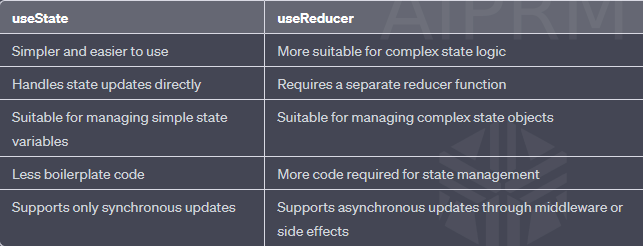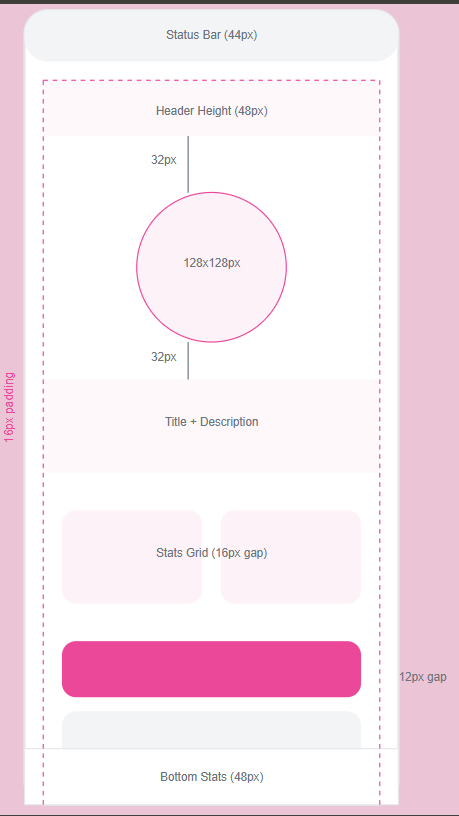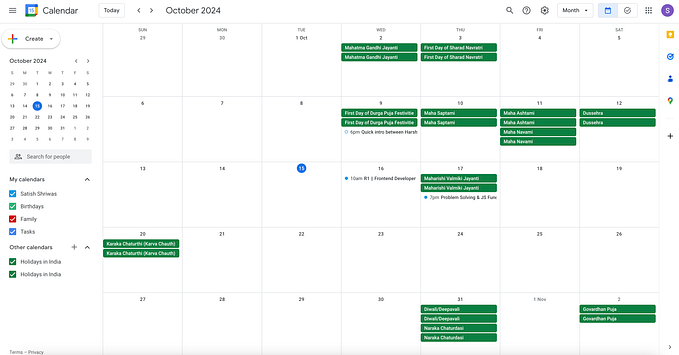😲useState vs useReducer: Understanding the Key Differences
When it comes to state management in React, two commonly used hooks are useState and useReducer. These hooks play a crucial role in managing state within functional components. While both serve the same purpose of maintaining state, they have distinct differences that developers should be aware of. In this article, we will delve into the nuances of useState vs useReducer and explore their features, use cases, and benefits. 🔄.
1. What is useState?
useState is a built-in React hook that enables functional components to manage state. It allows developers to declare and update state variables, thereby facilitating the rendering of dynamic content within components. With useState, you can easily handle state within a functional component without the need for class-based components.
2. How does useState work? 🛠️
To use useState, you first import it from the React library:
import React, { useState } from 'react';Next, you can declare a state variable using array destructuring:
const [count, setCount] = useState(0);In the example above, count represents the state variable, and setCount is a function that allows you to update the state. The initial value of the state variable is set to 0 in this case.
3. Advantages of using useState✅
- Simplifies state management in functional components.
- Requires less boilerplate code compared to class-based components.
- Allows you to have multiple independent state variables in a single component.
- Provides a straightforward and intuitive approach to handle state changes.
4. Limitations of useState❌
- May lead to complex nesting when dealing with deeply nested state objects.
- Could result in performance issues when handling large or complex state objects.
- Limited support for handling asynchronous updates.
5. Use cases for useState📋
- Managing simple state variables such as counters, toggles, or input values.
- Handling local component state that doesn’t need to be shared across multiple components.
- Implementing basic form validation and user input handling.
6. What is useReducer?
useReducer is another built-in React hook that provides an alternative approach to state management. It allows you to manage more complex state logic by using a reducer function similar to how Redux manages state.
7. How does useReducer work? 🛠️
To use useReducer, you first import it from the React library:
import React, { useReducer } from 'react';Next, you define a reducer function that handles state updates based on different actions:
const reducer = (state, action) => {
// Perform state updates based on the action type
switch (action.type) {
case 'INCREMENT':
return state + 1;
case 'DECREMENT':
return state - 1;
default:
return state;
}
};
const [count, dispatch] = useReducer(reducer, 0);In the example above, count represents the state variable, and dispatch is a function used to trigger state updates by providing an action object.
8. Advantages of using useReducer✅
- Provides a more centralized and predictable approach to state management.
- Enables handling of complex state logic with ease.
- Supports asynchronous state updates through the use of middleware or side effects.
9. Limitations of useReducer❌
- Requires more code compared to useState for simple state management scenarios.
- Might introduce additional complexity for small-scale applications.
- May not be the best choice for managing simple state variables or local component state.
10. Use cases for useReducer📋
- Managing state that involves multiple related values or complex data structures.
- Implementing more advanced form validation and handling of form state.
- Handling global application state when combined with Context API or third-party state management libraries like Redux.
11. Comparing useState and useReducer🔄
While both useState and useReducer can be used for state management, they have some key differences:
- useState is simpler and more suitable for managing simple state variables, while useReducer is better suited for complex state logic.
- useState allows you to handle state updates directly, while useReducer requires you to define a separate reducer function to handle state updates based on actions.
- useReducer provides a more centralized approach to state management, making it easier to handle larger applications with complex state requirements.
12. Key differences between useState and useReducer⚖️
Here are some key differences between useState and useReducer:

Which one should you choose? 🤔
The choice between useState and useReducer depends on the complexity of your state management needs. If you're dealing with simple state variables or local component state, useState is usually sufficient. However, if you have more complex state logic or need to handle asynchronous updates, useReducer provides a more scalable and centralized solution.
14. FAQs
1. What is the purpose of useState?
The purpose of useState is to manage state within functional components in React. It allows you to declare state variables and update them, triggering re-rendering of the component when the state changes.
2. Can useReducer be used instead of useState?
Yes, useReducer can be used instead of useState . While useReducer provides a more powerful and centralized approach to state management, it may introduce additional complexity for simpler state management scenarios.
3. When should I use useReducer?
You should use useReducer when you have complex state logic, need to handle asynchronous updates, or want a more centralized approach to state management. It's particularly useful for managing global application state or handling state in larger-scale applications.
4. Is useReducer more performant than useState?
In terms of performance, useReducer and useState are similar. The performance impact is more dependent on how you structure your state and how efficiently you update it, rather than the specific hook you choose.
5. Can I use both useState and useReducer in the same component?
Yes, you can use both useState and useReducer in the same component. This can be useful when you have a mix of simple and complex state requirements within a single component.
6. How do I choose between useState and useReducer?
To choose between useState and useReducer, consider the complexity of your state management needs. If you have simple state variables and local component state, useState is usually sufficient. However, for more complex state logic or asynchronous updates, useReducer provides a more scalable and centralized solution.
Conclusion
In conclusion, useState and useReducer are essential hooks for state management in React. Understanding their differences and knowing when to use each can greatly improve your React development skills. Whether you choose useState for simpler state management or useReducer for more complex scenarios, these hooks will help you build robust and efficient React components.






